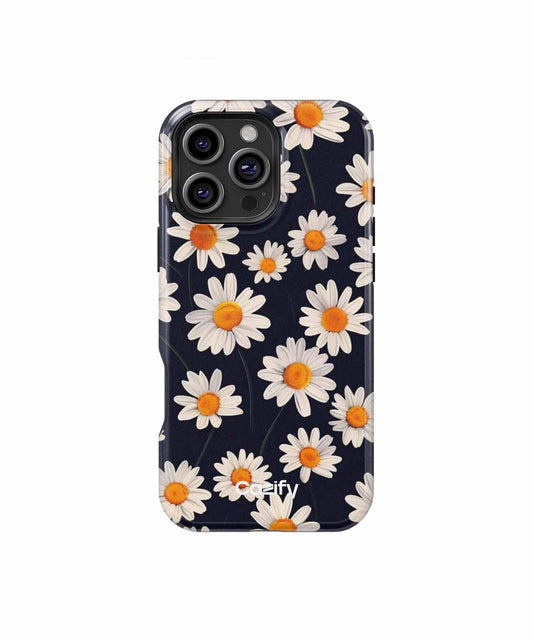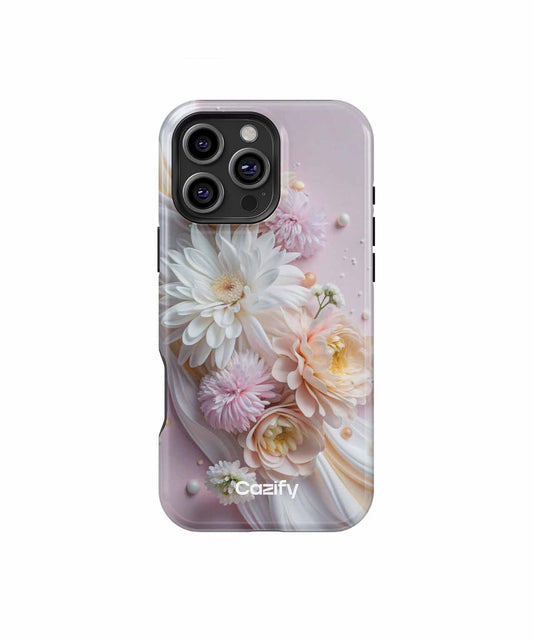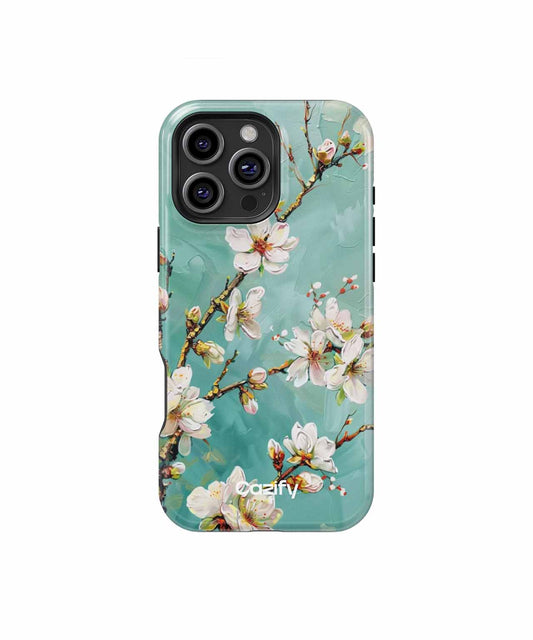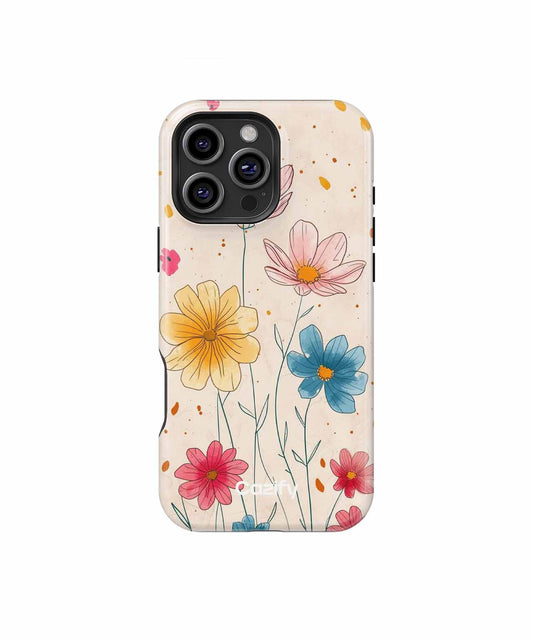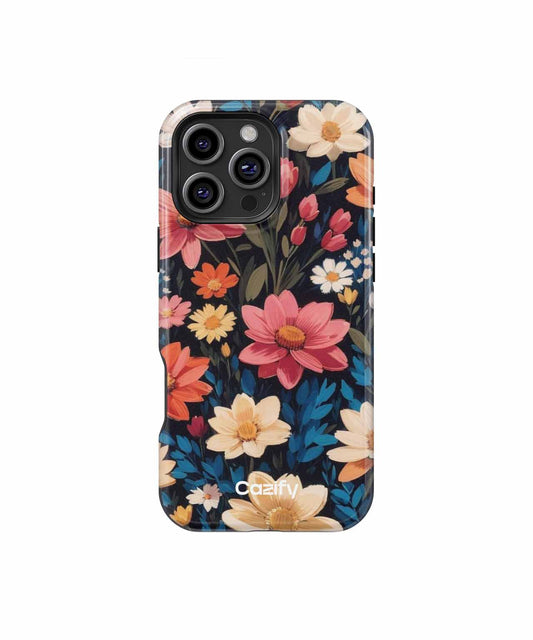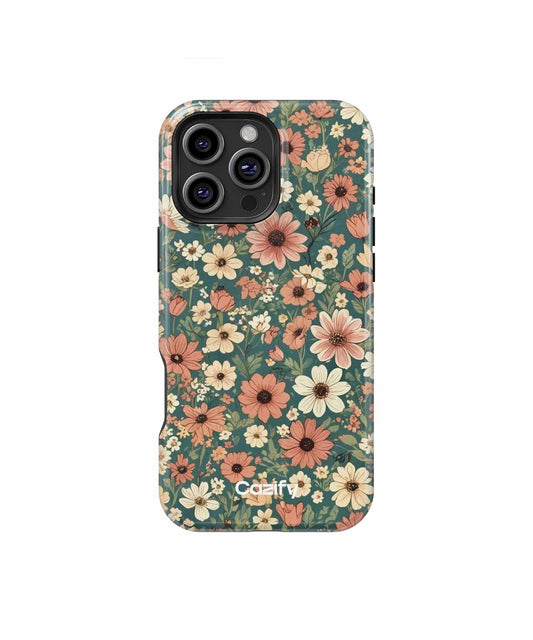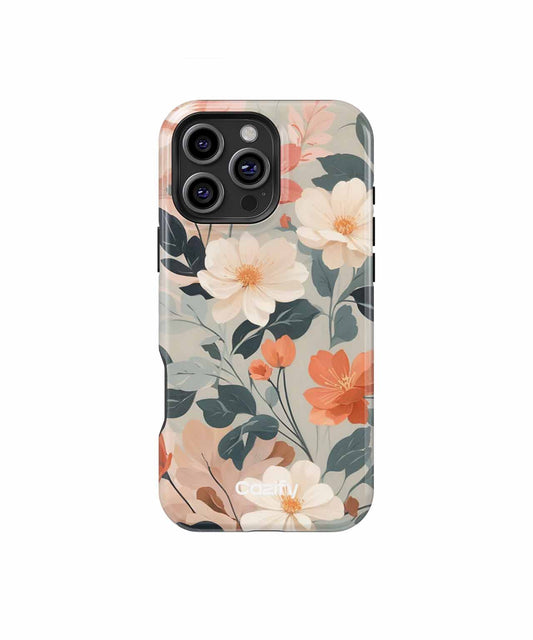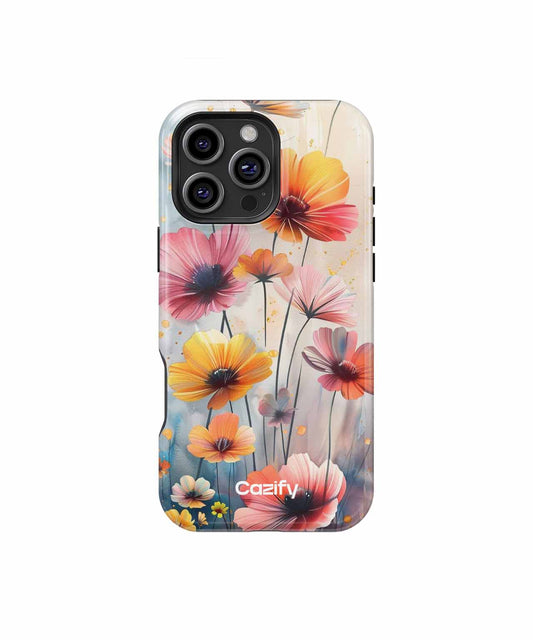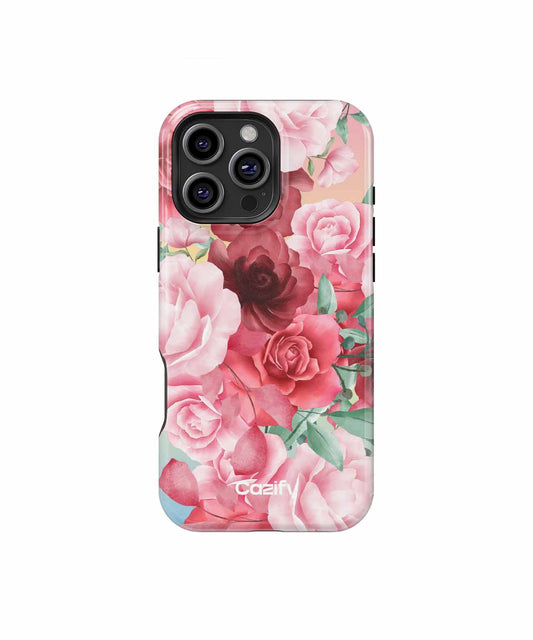
iPhone Cases Buyers Guide: Trendy, Tough, and Trusted
Share
Introduction to iPhone Cases: Balancing Style and Functionality
In an era where smartphones are indispensable, iPhone cases serve as both protective gear and accessories that showcase personal style. Choosing the right case requires a thoughtful balance between aesthetics and utility, as each option provides distinct benefits based on individual needs and preferences.
iPhone cases come in a variety of materials, each offering unique characteristics. Silicone cases are valued for their soft, grippy texture, which prevents accidental slips, while leather cases provide a sleek, professional appearance that ages elegantly over time. Alternately, hard plastic cases boast exceptional durability and come in endless designs, catering to those who prefer customizable looks.
Typically, buyers should consider their lifestyle when selecting an iPhone case. For those with active outdoor routines, rugged cases with shock-absorbing features and raised bezels offer reliable protection against drops and scratches. In contrast, professionals in formal settings might gravitate toward slim, minimalist cases that complement an executive aesthetic without adding bulk. Transparent cases allow users to flaunt Apple’s signature design while still offering basic protection—a popular choice for fashion-conscious users.
Functionality extends beyond protection, with many cases featuring additional enhancements. For example, some incorporate built-in kickstands, facilitating hands-free usage during video calls or media streaming. Others include storage for credit cards, combining the practicality of a wallet with the convenience of a phone case. Wireless charging compatibility is another growing trend, ensuring that cases work effortlessly with modern charging pads.
By merging design with dependable functionality, iPhone cases have become versatile tools. Whether prioritizing personal style or superior protection, the right case can seamlessly combine both, adapting to the user’s day-to-day demands.
Understanding the Different Types of iPhone Cases
When selecting an iPhone case, understanding the broad category types is crucial. Each type caters to distinct needs, offering varying levels of protection, style, and functionality. Familiarizing oneself with these options ensures an informed decision that complements both lifestyle and phone usage habits.
1. Slim and Minimalist Cases
Slim cases focus on maintaining the sleek profile of the iPhone. Lightweight and discreet, they are often made from materials like TPU or polycarbonate and provide basic protection against minor scratches and scuffs. Although these cases prioritize aesthetics, they may lack significant impact resistance, making them ideal for users who prioritize design over rugged protection.
2. Rugged and Heavy-Duty Cases
Rugged cases are engineered for maximum durability, often incorporating shock-absorbent layers and reinforced corners to withstand substantial drops. Popular materials include rubber, silicone, and rigid plastics. Many rugged cases conform to military-grade standards, offering a combination of water resistance and dust sealing. These are best suited for individuals with active lifestyles or those frequently in harsh environments.
3. Wallet and Folio Cases
Wallet-style and folio cases combine protection with practicality. They typically feature card slots, cash compartments, or even magnetic closures, serving as a multifunctional accessory. Crafted from leather, synthetic leather, or fabric, they provide comprehensive front and back protection while offering sophisticated style. They appeal to those who value organization and prefer carrying fewer items.
4. Clear and Transparent Cases
For users who want to showcase the original design of their iPhone, clear cases are a popular choice. Often made from polycarbonate or TPU, these cases offer visibility while guarding against scratches and moderate drops. They come in anti-yellowing finishes, ensuring longevity in appearance.
5. Battery Cases
Battery cases double as a charging solution, integrating built-in power banks. They extend the device’s battery life, making them a practical option for frequent travelers or heavy phone users. However, they often add noticeable weight and bulk.
Understanding the unique benefits and features of each type of iPhone case helps match personal priorities with functional needs, ensuring a perfect fit for any user scenario.
Material Matters: Pros and Cons of Popular iPhone Case Materials
When choosing an iPhone case, the material plays a critical role in determining durability, aesthetics, and functionality. Below is an overview of commonly used materials, including their advantages and drawbacks, to help buyers make informed decisions.
1. Silicone
Silicone cases are popular for their soft, flexible nature and shock-absorption properties. Pros:
- Offers excellent grip, reducing the chances of accidental drops.
- Resistant to water and most environmental elements.
- Lightweight and slim, enhancing portability without adding bulk.
Cons:
- Prone to attracting dust, lint, and smudges over time.
- Can wear out or stretch with prolonged use.
- Limited scratch protection compared to harder materials.
2. Plastic (Polycarbonate and TPU)
Plastic cases, especially those made from polycarbonate or thermoplastic polyurethane (TPU), dominate the market due to their versatility. Pros:
- Highly affordable and available in a wide range of designs and colors.
- Durable and resistant to fading and scratching.
- Thin and lightweight without compromising device protection.
Cons:
- May become brittle over time, particularly polycarbonate.
- Offers minimal shock resistance compared to silicone or rubber.
- Can feel slippery without added grip enhancements.
3. Leather
Leather iPhone cases exude elegance and sophistication, often appealing to those who prioritize style. Pros:
- Provides a premium, professional look and feel.
- Gains a beautiful patina over time with proper care.
- Natural texture enhances grip.
Cons:
- Less affordable, often priced as a luxury option.
- Susceptible to wear, scuffs, and exposure to moisture.
- Limited range of colors compared to synthetic materials.
4. Wood
Wooden cases provide a unique aesthetic for users drawn to natural and rustic designs. Pros:
- Eco-friendly and often handcrafted for individuality.
- Delivers a warm, natural texture that feels comfortable in hand.
- Robust against scratches and surface damage.
Cons:
- Offers inferior shock absorption and impact resistance.
- Can be heavier than other case materials.
- Limited flexibility, making them susceptible to cracks under significant stress.
5. Hybrid (Multi-Material)
Hybrid cases combine materials like silicone, polycarbonate, and rubber for added versatility. Pros:
- Balances durability, shock absorption, and style.
- Enhanced protection through reinforced corners and multi-layer designs.
- Offers customizable options for varied preferences.
Cons:
- Heavier and bulkier compared to single-material cases.
- Typically more expensive.
- Complex material layers may reduce recyclability.
Understanding these material characteristics ensures buyers select a case that aligns with their lifestyle, aesthetic priorities, and protective needs.
Design Trends: Staying Fashionable with Your iPhone Case
Keeping an iPhone case stylish while safeguarding your device requires a careful balance of design, materials, and functionality. Each year introduces fresh trends in iPhone case aesthetics, blending creativity with utility. For individuals keen on staying fashionable, selecting a case that reflects the latest design movements is essential.
Popular Patterns and Prints
Patterns and prints have gained immense popularity in recent years. Whether it’s geometric designs, abstract art, or bold animal prints, these elements bring personality to your phone. Options featuring marble textures, floral motifs, or holographic finishes allow users to express individuality while adding visual appeal.
Minimalist and Transparent Styles
Minimalism continues to dominate design trends for those who prefer understated elegance. Clear or slim transparent cases remain a top choice, showcasing the iPhone’s seamless design while offering protection. These styles pair particularly well with the phone’s sleek colors, creating a visually sophisticated look without unnecessary embellishments.
Eco-Friendly Innovations
Sustainability has also made its mark on iPhone case design. Many brands now offer cases made from biodegradable materials or recycled plastics. These eco-friendly options cater to style-conscious individuals who are also environmentally mindful. Subtle yet chic, these cases often feature neutral tones or organic textures that complement the green movement.
Bold and Customizable Choices
Vibrant colors, glitter-infused designs, and customizable formats enable users to stand out effortlessly. Personalized cases, featuring initials, monograms, or unique graphics, provide both exclusivity and flair. Custom photo collages and interchangeable elements further enhance their appeal, turning the case into a personal statement.
By combining aesthetics with utility, modern iPhone cases align with fast-evolving design trends, appealing to various style preferences. A case no longer serves as just a protective cover, but as an extension of one’s personality and fashion taste.
Durability First: Shockproof and Heavy-Duty Options
For users who prioritize protection above all else, shockproof and heavy-duty iPhone cases are an indispensable choice. These cases are specifically engineered to safeguard devices against unexpected drops, impacts, and daily wear and tear. Typically built from robust materials such as polycarbonate, thermoplastic polyurethane (TPU), or hybrid combinations, they provide superior resilience in demanding conditions.
Heavy-duty cases often meet or exceed military-grade drop-test standards, which ensure protection from heights as high as 10 feet or more. Many models also incorporate reinforced corners and raised edges to shield sensitive areas such as the screen and camera lenses. This added structure plays a critical role in absorbing and distributing shock forces, minimizing damage to the phone.
Features such as multi-layered construction are common in these cases. The outer layer provides rigidity and impact resistance, while the inner layer, often made of softer materials like silicone, cushions the device. Some designs include built-in screen protectors or port covers to guard against dust, dirt, and even water splashes, improving all-around protection.
Key industry leaders in the rugged category include brands like OtterBox, SUPCASE, and Urban Armor Gear (UAG). They offer cases that not only excel in durability but also maintain compatibility with wireless charging, ensuring convenience isn’t sacrificed. For adventurous lifestyles or professions requiring tough environments, specialized cases with belt clips and holsters are widely available.
When selecting a shockproof case, users should look for certifications, ease of handling, and compatibility with their iPhone model. These cases provide peace of mind by ensuring the device remains safe, regardless of life’s unpredictable moments.
Eco-Friendly Choices: Sustainable iPhone Cases on the Rise
As consumers become increasingly conscious of their environmental impact, the market for sustainable iPhone cases has expanded significantly. These cases combine style, durability, and eco-conscious sourcing, offering a practical solution for environmentally aware shoppers. They not only protect smartphones but also minimize carbon footprints and reduce waste.
Sustainable iPhone cases often stand out for their materials, which include biodegradable, recycled, or plant-based components. Many manufacturers use renewable resources such as bamboo, cork, or wheat straw to craft their designs. Others rely on post-consumer recycled plastics, diverting waste from landfills and giving materials a second life. These options meet the dual demands of aesthetic appeal and long-lasting protection.
A notable feature of eco-friendly iPhone cases is their compostability. Cases labeled as fully biodegradable can break down naturally under industrial or specific composting conditions, leaving behind no harmful residue. Some certifications, like those from the Biodegradable Products Institute (BPI), certify such products, ensuring they meet strict environmental standards.
Consumers also have access to brands that partner with environmental causes. Companies may pledge to plant a certain number of trees, remove ocean plastic, or contribute a percentage of profits to conservation initiatives. These efforts add an extra layer of social responsibility to the purchase.
The rise in eco-friendly iPhone case options reflects growing industry trends in sustainable manufacturing. While these cases may carry a slightly higher price tag, the investment aligns with broader goals of environmental stewardship. As awareness grows, more brands are expected to embrace green innovation, paving the way for a cleaner, more sustainable future.
Trusted Brands: Comparing the Top Manufacturers of iPhone Cases
When it comes to protecting your iPhone, not all cases are created equal. Established brands often stand out due to their consistent quality, innovative designs, and customer trust. Below is a detailed comparison of leading iPhone case manufacturers known for their reliability and performance.
OtterBox
OtterBox has earned its reputation as a leader in rugged iPhone protection. Offering various series like Defender, Symmetry, and Commuter, the brand focuses on durability and impact resistance. Many of its cases feature multi-layered designs to withstand drops and shocks, appealing to those seeking robust protection. OtterBox also partners with sustainability initiatives, producing eco-friendly cases like the Core Series.
Spigen
Spigen blends style and functionality, catering to both aesthetics and practicality. Known for its slim designs, Spigen offers cases such as the Tough Armor and Liquid Air. These models emphasize sleek looks without compromising on features like air cushion technology for shock absorption. The brand provides options for all preferences, from minimalist clear cases to rugged, military-grade options.
Apple
Apple’s own line of iPhone cases reflects its dedication to premium craftsmanship. Designed with perfect compatibility in mind, Apple’s cases—like its silicone, leather, and MagSafe models—provide seamless integration with the iPhone’s features. They excel in offering a snug fit and are ideal for users who value minimalism and Apple’s signature aesthetic.
Casetify
Casetify differentiates itself with customizability and trend-focused designs. Known for eye-catching graphics and patterns, it appeals to users wanting style alongside protection. Its Impact and Ultra Impact cases use proprietary QiTech technology, giving them impressive drop resistance while remaining lightweight. Casetify also highlights its commitment to sustainability, offering cases made from recycled materials.
Speck
Speck produces cases that strike a balance between protection and portability. Its Presidio series is a standout, offering dual-layer construction and anti-microbial features. Speck cases are tested for drop protection exceeding military standards, making them suitable for users who need reliable durability. The brand’s focus on vibrant colors and sleek silhouettes ensures its cases remain both practical and polished.
Urban Armor Gear (UAG)
Urban Armor Gear is synonymous with rugged aesthetics, designed for adventurers and outdoor enthusiasts. Featuring feather-light construction and military-grade drop protection, UAG’s cases like the Monarch and Plasma Series ensure maximum security while maintaining a modern look. Their heavy-duty materials cater specifically to extreme conditions, appealing to users with active lifestyles.
Each of these brands delivers unique strengths, allowing users to choose based on their priorities, whether that’s durability, style, sustainability, or compatibility.
Compatibility Check: Ensuring a Perfect Fit for Your iPhone Model
When selecting an iPhone case, ensuring compatibility with your specific model is paramount. Apple regularly introduces new iPhones with variations in dimensions, button placements, and camera module designs. Even a minor mismatch can result in improper fit, diminished functionality, or compromised protection, making detailed checks essential before purchasing.
Begin by confirming the exact model of your iPhone. Each version, from the iPhone SE to the Pro Max lineup, has distinct physical dimensions and design features. For example, the curved edges of the iPhone 11 differ significantly from the flat-edge design of the iPhone 13 or later models. A case designed for a previous generation will not universally fit newer releases, even if the devices appear similar at first glance.
Pay close attention to camera cutouts. With increasing advancements in camera technology, newer models often feature differently sized or positioned lenses. A poorly aligned case can obstruct these lenses or create awkward shadows when taking photos or videos. Similarly, check for precise button covers and access ports. Features like mute switches, speakers, and charging ports must remain fully accessible without compromising the device’s usability.
For those who prefer wireless charging, verify that the case supports MagSafe or Qi charging standards. Thicker or metallic cases may hinder this functionality unless explicitly designed to accommodate it. Reading product descriptions and reviews can help determine whether a case will meet these needs without interference.
Finally, consider the potential for future upgrades. Some manufacturers design cases that cater to multiple models within a series, offering flexibility for users planning to switch devices. Always cross-reference sizing charts or consult customer support to avoid any missteps, ensuring that your chosen case provides both compatibility and protection for your iPhone model.
Extra Features to Look for: Kickstands, Wallets, and More
Selecting an iPhone case goes beyond the basics of protection and aesthetics. Many manufacturers now offer cases loaded with additional features to enhance convenience and functionality. These often-overlooked details can make a significant difference in daily use.
Kickstands for Hands-Free Viewing
Kickstands are a practical feature for those who frequently watch videos, join video calls, or use their iPhones as a display device. Integrated kickstands allow the phone to rest in a sturdy, angled position, freeing your hands for multitasking. Some cases include metal or plastic kickstands that blend seamlessly with the design, while others have built-in foldable flaps, often crafted from durable materials like aluminum or even leather.
Wallet Cases for Added Practicality
Wallet cases combine phone protection with storage capabilities. These cases typically come with cardholders, cash compartments, or sometimes even full zip pouches. Popular options include folio-style cases with magnetic closures that provide all-around coverage and space for IDs, credit cards, or cash. They are particularly useful for users seeking to consolidate personal essentials into one accessory. Variants range from minimalist designs holding just one or two cards to more extensive storage options catering to heavier needs.
MagSafe and Wireless Charging Support
Cases designed with MagSafe compatibility or wireless charging support eliminate the hassle of removing the case to power up the device. They often feature embedded magnets to ensure seamless alignment with MagSafe chargers and accessories, maintaining a lightweight and functional profile.
Other Functional Additions
Additional features to explore include cases with attached straps for added portability, antimicrobial coatings for improved hygiene, and rugged, shock-resistant designs for wilderness or outdoor enthusiasts. Some cases even feature customizable kickstand angles, detachable cardholders, or hidden storage compartments, offering tailored solutions for various user preferences.
Price vs. Performance: Finding the Best Value for Your Budget
When selecting an iPhone case, striking the right balance between price and performance is essential to make a smart investment. With a variety of cases available in every price range, buyers need to prioritize features that align with their device usage, lifestyle, and personal preferences. Cost alone should not guide the decision—value comes from addressing specific needs without overspending or sacrificing quality.
High-end iPhone cases, often priced above $40, typically offer premium materials like genuine leather, polycarbonate, or advanced thermoplastic polymers. These cases frequently include features such as military-grade drop protection, enhanced grip texture, or modular designs compatible with extras like cardholders or kickstands. In addition to durability, many high-end options are engineered to complement the sleek design of an iPhone, making them ideal for users who want both functionality and aesthetics.
Mid-range cases, priced between \(20 and \)40, tend to strike a balance between durability and affordability. Most of these cases use high-quality synthetic materials and often meet standard drop resistance requirements. Many options in this category feature slim profiles and minimalistic designs, appealing to users who want basic protection without added bulk. Buyers in this range may also find cases offering specialized coatings for fingerprint resistance or UV protection.
Budget-friendly cases, generally under $20, focus on affordability while providing essential coverage against scratches and light impacts. While these may lack extra features or premium finishes, many still offer good usability. Silicone and TPU-based cases dominate this price range, ensuring basic flexibility and ease of installation. They are suitable for users looking for immediate protection without incurring significant costs.
Assessing the value of a case requires analyzing how its features align with the buyer’s specific needs. For instance, a frequent traveler may value premium shock absorption, while a casual user might prioritize simplicity. Buyers should consider the case’s build quality and warranty coverage, ensuring the chosen product provides lasting protection without requiring frequent replacement.
How to Maintain and Clean Your iPhone Case for Longevity
Proper maintenance and cleaning of an iPhone case not only preserve its appearance but also enhance its durability. Different materials require specific care, so understanding the type of case is essential before cleaning. Whether made of silicone, leather, hard plastic, or wood, adhering to the appropriate method ensures its longevity.
To maintain your iPhone case:
- Avoid prolonged exposure to direct sunlight or heat. Excessive heat may warp silicone or plastic cases, while leather cases may dry out and crack.
- Keep it away from moisture if the material isn’t waterproof. While many cases are designed for water resistance, not all provide this feature.
- Prevent contact with abrasive materials. Scratches and scuffs can form when cases rub against rough surfaces, especially for polished finishes.
- Remove the case occasionally. Periodic removal aids in avoiding dust and dirt accumulation between the phone and the case, which can scratch the device.
For cleaning, follow these steps based on the material:
- Silicone and Plastic Cases: Use a damp, soft cloth with mild soap. Gently wipe away dirt, then dry with a microfiber cloth. Avoid abrasive cleaners, as they may damage the surface.
- Leather Cases: Clean with a leather-safe cleanser or a damp cloth. To keep the material supple, occasional conditioning with a leather cream is recommended.
- Wood Cases: Use a dry or slightly damp cloth. Polish periodically with wood oil to maintain its finish.
- Fabric or Hybrid Cases: Spot-clean stains with a gentle stain remover and use a soft brush for deeper cleaning if required.
Regular maintenance safeguards against discoloration, microbial buildup, and material degradation, keeping the iPhone case attractive and functional over time.
Where to Buy: Online vs. In-Store Shopping Tips
When purchasing an iPhone case, deciding between online and in-store options involves weighing convenience, selection, and hands-on experience. Both approaches offer distinct advantages depending on the buyer’s priorities, preferences, and timeline.
Online Shopping Tips
Shopping online provides vast options and the convenience of browsing from anywhere. E-commerce platforms, official case manufacturers, and marketplaces like Amazon offer a wide selection of styles, materials, and price points. Buyers should carefully read product descriptions to verify compatibility with their iPhone model and check materials for durability and comfort. Viewing high-resolution images with zoom features can provide a clearer sense of the case’s aesthetics.
Customer reviews are a key resource when purchasing online. They often highlight real-world experiences with the product, such as fit, protection level, and long-term wear. Verified buyer reviews can be especially helpful for identifying potential flaws or outstanding features. Additionally, comparison tools on many websites make it easier to weigh options based on cost, design, and brand reputation.
Consider shipping times when purchasing a case online. For those needing immediate protection, expedited shipping services or local pick-up options may add convenience. Beware of copycat brands by verifying the seller’s credentials or purchasing directly from reputable outlets.
In-Store Shopping Tips
Visiting a physical store allows buyers to assess the quality and feel of an iPhone case in person. This tactile experience is invaluable for evaluating texture, grip, and weight. Retailers such as Apple Stores, electronics outlets, and department stores often have live product displays, making it easier to gauge fits and finishes.
In-store shopping eliminates the need for shipping waits, making it ideal for same-day purchases or last-minute gifts. Store staff also provide immediate assistance, answering questions about compatibility or materials. Many stores might offer installation services to ensure proper fitting.
Final Thoughts: Choosing the Right iPhone Case for Your Needs
Selecting an iPhone case involves evaluating your lifestyle, priorities, and the specific features that align with your device’s requirements. Buyers should focus on compatibility, including ensuring the case fits the exact iPhone model and accommodates any unique features such as MagSafe or wireless charging.
The first consideration is the level of protection required. For those with active lifestyles or who frequently drop their phones, rugged or shockproof cases provide reinforced corners, military-grade drop certification, and multi-layer construction. On the other hand, minimalists may prefer slim or lightweight cases, which provide basic protection while maintaining the sleek profile of the iPhone.
Material plays a critical role in determining comfort, durability, and style. Silicone and thermoplastic polyurethane (TPU) are known for their flexibility and shock absorption but may have varying levels of grip. Hard plastic and polycarbonate options prioritize sturdiness, though they may feel less ergonomic. For an elevated aesthetic, leather cases offer a premium, professional appeal, while biodegradable materials cater to eco-conscious consumers.
For added functionality, buyers often look for features such as cardholder slots for on-the-go convenience, built-in kickstands for hands-free viewing, or waterproof capabilities for added durability. Those in creative fields might gravitate toward customizable or quirky designs that reflect their personal style.
When selecting a case, considering brand reputation and customer reviews is also crucial. Trusted manufacturers often provide warranty coverage and high-quality materials, ensuring better long-term value. Budget-conscious shoppers can opt for third-party brands, but should vet them carefully for reliability.
By balancing aesthetics, functionality, and durability, buyers can identify an iPhone case that seamlessly fits their unique needs—both for everyday use and occasional adventures. Transitioning between various environments becomes simpler with a case tailored to support both lifestyle and device longevity.

